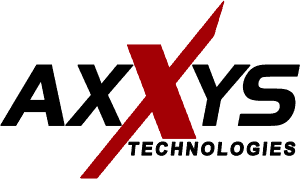Your IT infrastructure is only as strong as the foundation it’s built on, and that foundation starts with documentation. Whether it’s managing day-to-day operations, troubleshooting issues, or recovering from an unexpected outage, well-crafted IT documentation ensures your team has the critical information they need—exactly when they need it. Without it, even minor setbacks can spiral into major disruptions, impacting your bottom line and your ability to serve customers.
This post explores the essential role IT documentation plays in creating a resilient, efficient, and secure technological framework for your business. Once you understand how important documentation is, you’ll be better equipped to update and maintain your own IT documentation for a stronger, more secure network going forward.
Significance and Role of Information Technology Documentation
What exactly is IT documentation?
Primarily, it serves as the master plan for your organization’s technological framework. Consider documentation a data storage hub to aid your IT team in managing your network. IT documentation includes network diagrams, admin credentials, hardware and software inventories, and disaster recovery plans. These tools create a blueprint of your technological framework.
Documentation also includes:
- Administrative credentials
- Access control lists
- Your system’s passkeys, meant only for approved users.
This data controls entry to various sections of your infrastructure, and must be recorded and stored securely should you need it.
IT documentation also includes inventories for both hardware and software. These inventories outline every technological program and tool that your business uses, from devices to licenses and everything in between. This package should include information about your suppliers and service providers as well as any warrantees or maintenance contracts. This data streamlines the process of getting help when problems occur with any equipment or applications.
Document data backup, disaster recovery, policies, workflows, and SOPs. These backup strategies serve as protective shields to prevent downtime and customer dissatisfaction, both of which can be costly to your business in the event of an emergency.
The process of creating IT documentation isn’t a single, finite task. As your IT infrastructure evolves, the process must actively adapt and change with it. To maintain the accuracy of your records, update them consistently to avoid relying on details that are months or years old.
Benefits of Information Technology Documentation
Smooth business operations rely on meticulous documentation. It helps ensure continuous functionality, despite unforeseen interruptions. These include cyber threats, machinery breakdowns, supply chain issues, and even acts of nature. Properly kept documentation allows your team to react quickly and effectively. It’s akin to looking at the pieces of a jigsaw puzzle next to the finished image. Thorough documentation allows for swift recognition and placement of absent components. This kind of record-keeping essentially serves as a guide for recovery in times of crisis.
Consider these key benefits of great IT documentation:
- Reduced Downtime
- Comprehensive records allow your team to quickly troubleshoot and resolve issues, minimizing interruptions to operations.
- Streamlined Onboarding
- New IT staff can quickly understand systems and processes, reducing training time and improving productivity from the start.
- Efficient Problem-Solving
- With all network diagrams, credentials, and inventories on hand, your team can easily identify and fix issues without wasting time searching for information.
- Improved Security
- Up-to-date documentation ensures access controls and security protocols are clearly defined and enforced, reducing vulnerabilities.
- Simplified Compliance
- Detailed records make it easier to demonstrate compliance with regulations and industry standards during audits or inspections.
- Business Continuity and Disaster Recovery
- Clear documentation of backup and recovery plans ensures your business can quickly recover from outages, disasters, or cyberattacks.
- Knowledge Retention
- Prevents reliance on individual expertise by centralizing critical information, reducing risks if key staff leave the organization.
- Enhanced Communication
- Consistent documentation across departments improves collaboration and alignment, ensuring everyone works from the same playbook.
- Cost Savings
- Reduces wasted time, prevents errors, and avoids costly downtime, ultimately saving money in the long run.
- Future-Proofing
- Scalable, updated documentation ensures your IT framework can evolve with your business needs, avoiding obsolescence.
Great IT documentation isn’t just about organizing information—it’s about creating a robust, efficient, and secure foundation that protects your business, supports your team, and ensures you’re prepared for any challenge.
Consequences of Poor IT Documentation
If your IT system encounters a problem, you’ll want detailed information available to help your team navigate the issue. Companies suffer significant downtime as a result of poorly-kept or outdated IT records. Some outages can’t be helped. Having them go on and on and on because of poor documentation only makes a bad problem worse.
Poor IT documentation can cripple your organization in ways that are both immediate and far-reaching. Here’s how:
- Increased Downtime
- Without clear and accurate records, resolving IT issues becomes a guessing game. Every minute spent searching for information prolongs outages, disrupts operations, and frustrates customers.
- Lost Institutional Knowledge
- When key IT personnel leave, undocumented knowledge about systems and processes goes with them. This creates gaps that are costly and time-consuming to fill, leaving your business vulnerable.
- Weakened Security
- Outdated or missing documentation makes it difficult to manage access controls or identify vulnerabilities. This increases your exposure to cyberattacks, data breaches, and compliance violations.
- Operational Inefficiencies
- Teams waste valuable time piecing together information from scattered sources, leading to delays, errors, and missed deadlines.
- Compliance Risks
- Regulatory audits require detailed documentation of your IT systems and processes. Poor record-keeping can result in fines, penalties, and reputational damage.
- Higher Recovery Costs
- In a crisis, such as a system failure or natural disaster, the absence of a clear recovery plan can lead to extended downtime and costly emergency measures.
- Strained IT Staff
- Without proper documentation, even routine tasks become labor-intensive, leading to burnout and reduced efficiency among your IT team.
- Client and Stakeholder Frustration
- Prolonged outages or security incidents caused by poor documentation can erode client trust, damage your reputation, and hurt your bottom line.
The consequences of insufficient or absent IT documentation can manifest in a myriad of ways. It’s easy to see why keeping detailed and accurate records can help you prepare for any technological hazards.
Creating and Maintaining Documentation for Information Technology
Developing a system for documentation starts with an appraisal of your current IT framework. This assessment will help identify documentation gaps and assign priority to critical information. This method guarantees documentation of essential systems and procedures.
When assembling your records, aim for clarity over intricacy. Organize your documents for easy access. Use uniform templates. Sort information by identifiers, like content or department.
Maintaining the most recent information in your IT documentation is just as important as its initial creation. Update any modifications, operations, and staff on a quarterly or semi-annual basis.
Secure the Future of your Network
Lengthy system outages, digital security risks, and lost data can be horrifying. By maintaining comprehensive IT records, you are proactively safeguarding against unforeseen obstacles.
Developing and maintaining adequate IT documentation can seem daunting. Learn how Axxys Technologies can help you equip your company with the tools it needs now, to lay the groundwork for a resilient future.








